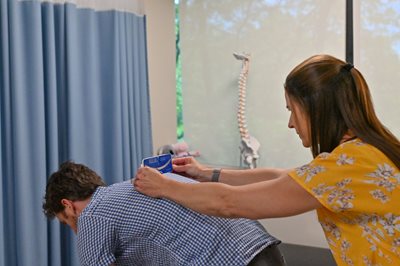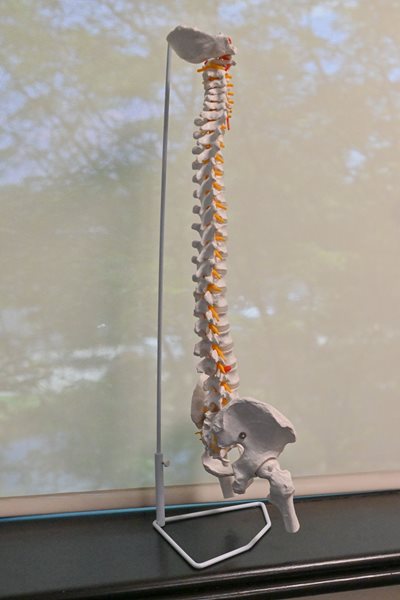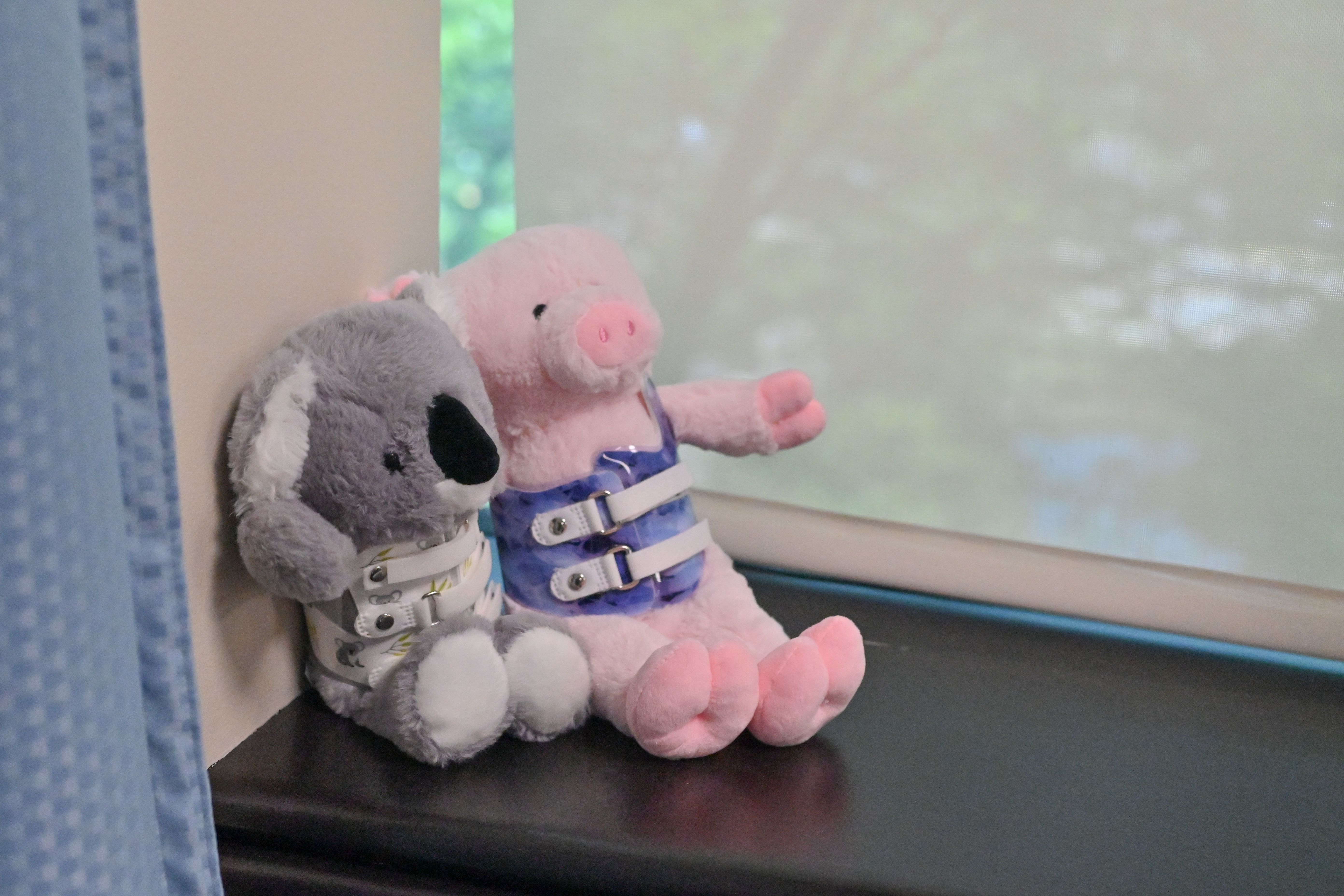June is Scoliosis Awareness Month, and when the first students arrive in the fall of 2022 to learn in the new Orthotics and Prosthetic (O&P) program at Salus University, they will be very much aware of what scoliosis is and taught how to effectively treat it.
Scoliosis is a three-dimensional condition in which the spine rotates and curves at one or more areas, most often diagnosed in childhood or early adolescence.
 According to the American Association of Neurological Surgeons, signs of scoliosis include: the shoulders are uneven — one of both shoulder blades may stick out; the head is not centered directly above the pelvis; one or both hips are raised or unusually high; rib cages are at different heights; the waist in uneven; the appearance of texture of the skin overlying the spine changes — dimples, hairy patches, color abnormalities; and the entire body leans to one side.
According to the American Association of Neurological Surgeons, signs of scoliosis include: the shoulders are uneven — one of both shoulder blades may stick out; the head is not centered directly above the pelvis; one or both hips are raised or unusually high; rib cages are at different heights; the waist in uneven; the appearance of texture of the skin overlying the spine changes — dimples, hairy patches, color abnormalities; and the entire body leans to one side.
What will make the Salus O&P program different than the other 13 programs is that one of its core values focuses on cultural humility.
“What we want to remember, especially in the case of idiopathic scoliosis, where most cases are aesthetic and prevent very little danger of adverse effects, is that we want to recognize that these aesthetic changes to the person’s body can affect them both culturally, socially and psychologically,” said Julie Quinlan, MPO, MS, CPO, ATC, the first faculty member hired for the new O&P program. “We want to teach students to treat more than the curvature of the spine - they are treating the person as whole.”
One of the things O&P students will learn in their coursework is understanding the nature of the spinal curve or curves and how to utilize brace design to unwind the spine and create balance in the patient’s posture. Every scoliosis brace will be custom-designed for the patient to suit their individual needs.
 “Every patient’s curve, body and needs are different, so they all require different trim lines and contact points to meet the goal(s) of their treatment plan,” said Quinlan. “We don’t actually put force on the body, we make contact with the body utilizing three-point pressure systems and expansion areas in all three planes.”
“Every patient’s curve, body and needs are different, so they all require different trim lines and contact points to meet the goal(s) of their treatment plan,” said Quinlan. “We don’t actually put force on the body, we make contact with the body utilizing three-point pressure systems and expansion areas in all three planes.”
The body’s three planes include a coronal plane (also known as the frontal plane), which is any vertical plane that divides the body into ventral and dorsal (belly and back) sections; the sagittal plane, or longitudinal plane, an anatomical plane which divides the body into right and left parts; and the transverse plane or axial plane, which is an imaginary plane that divides the body into superior and inferior parts. It is perpendicular to the coronal plane and sagittal plane. It is one of the planes of the body used to describe the location of body parts in relation to each other. Scoliosis awareness will be taught within the University's O&P spinal course. But since many of the patients diagnosed with scoliosis will likely be adolescents, students will learn both physical and psychological treatments.
“We are also going to be focused on teaching the students how to engage with the patients, how to talk to adolescents and their parents who have just learned that their child has been diagnosed and may not completely understand what the condition is,” said Quinlan.
In more than 80 percent of cases, the cause of scoliosis is unknown, called idiopathic scoliosis. In other cases, scoliosis may be neurologically involved, congenital or develop as a result of degeneration of the spinal discs, as seen with arthritis, osteoporosis or a heredity condition that tends to run in families.
With scoliosis awareness, Quinlan said, the biggest piece is early detection. “It’s very important to understand the signs that are associated with scoliosis. You may be able to see the asymmetry in your child’s posture. One shoulder may be lower than the other, a wider arm gap on one side may be present, a visible 'hump' on their spine when they bend over, or they seem unbalanced or favoring one side when standing,” she said. “It’s important to always be aware of differences and if you’re seeing them, let your physician know sooner rather than later.”
